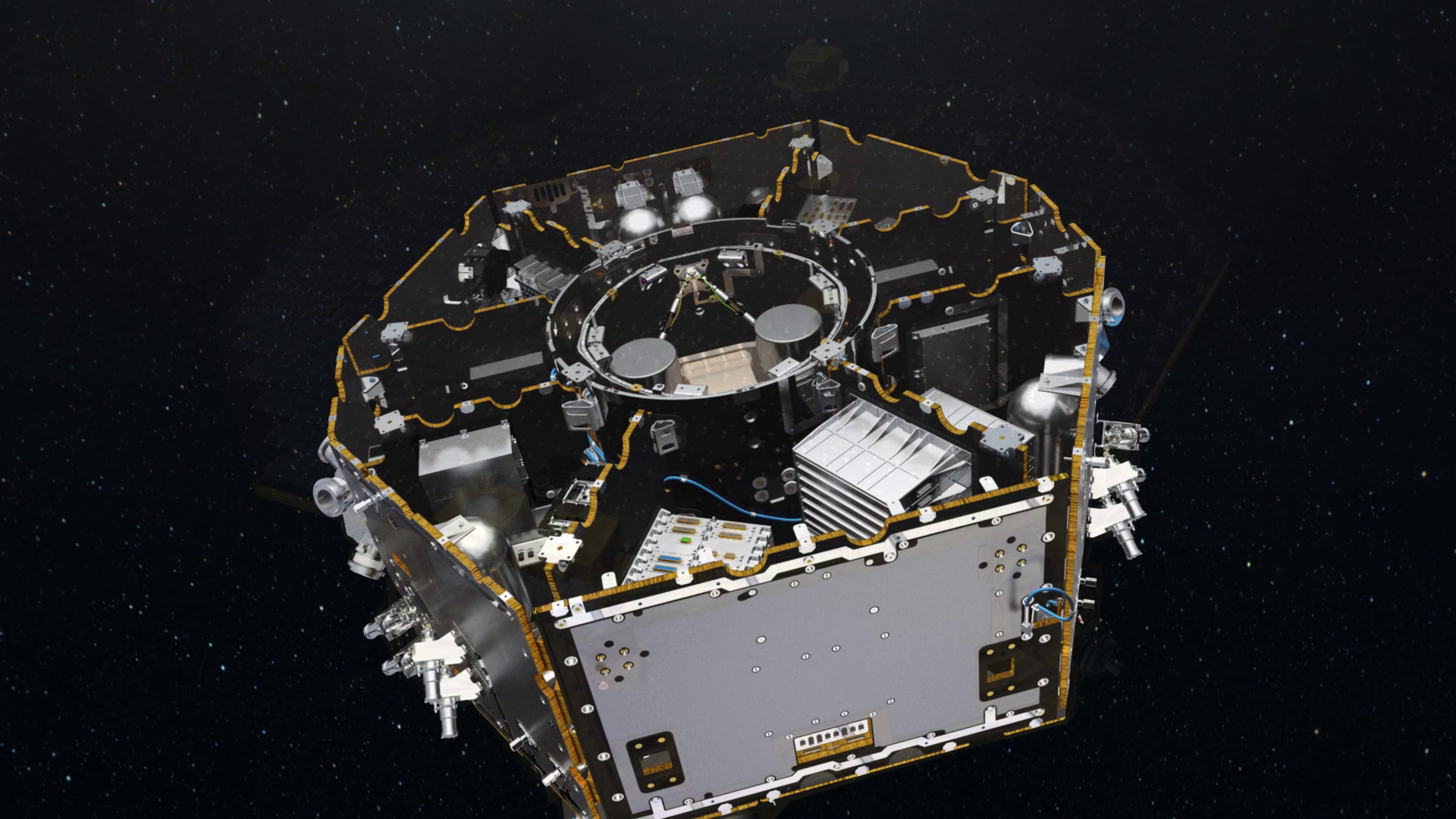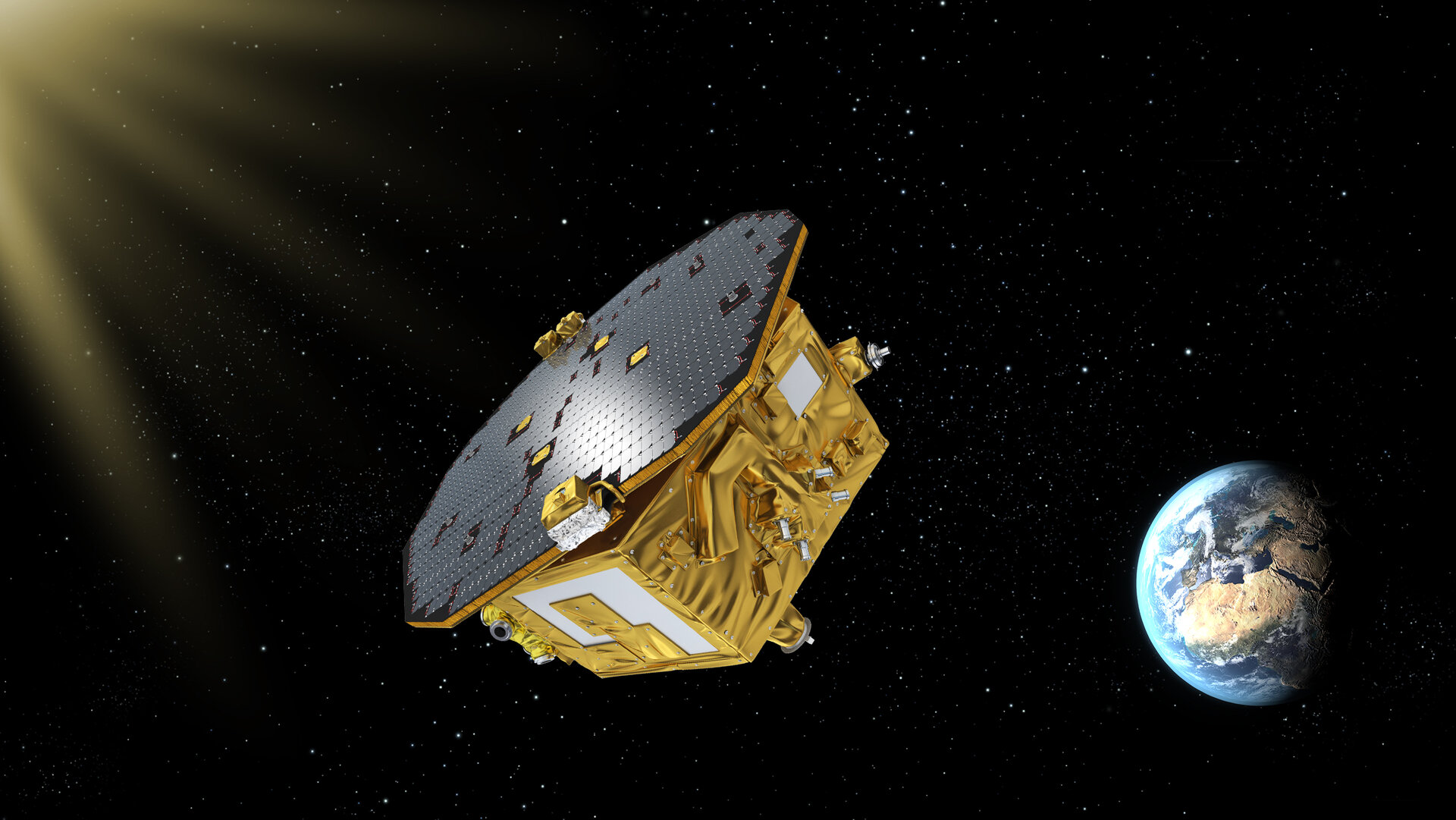LISA Pathfinder’s legacy
Measuring gravitational waves in space has never been done. Before ESA could even consider the LISA mission, new technology had to be invented and tested. The LISA Pathfinder mission was constructed to prove that the needed technology would function in space.
Golden test cubes

Central to the LISA mission are gold-platinum cubes, two of which sit in each of LISA’s three spacecraft. The mission will discover gravitational waves by carefully and precisely measuring the distances between cubes in the spacecraft, because they are only susceptible to gravity and no other forces act on them.
To prove that these 46-mm cubes of 2 kg could freely float in space and not feel any other influences such as solar radiation and magnetic or electric forces, the LISA Pathfinder mission was born. This satellite launched on 3 December 2015 and successfully completed its mission by June 2017.
LISA Pathfinder to the rescue
The concept was easy: test if the cubes can stay completely still with no external or internal forces acting on them except for gravity. The execution was not as straightforward. The first step was to protect the cubes from external influences such as solar radiation. This was solved by building a protective spacecraft around them.
To protect the cubes from internal forces, they were placed inside a vacuum chamber that cleared away particles that could otherwise cause disturbances. The material of the cubes, gold-platinum alloys, was chosen because it is not very sensitive to magnetic fields. Additionally, they were placed inside an electrode housing to protect them from electric fields. Extra care was taken to place the lasers, which rely on magnetic fields, as far away from the cubes as possible.

A laser measuring system was used to determine the positions of the two cubes with respect to each other. If one of the cubes moved in a different way than the other, non-gravitational forces had an influence on them. By comparing their relative positions, LISA Pathfinder could monitor whether the cubes felt any of these influences.
Additionally, the laser system measured the positions of the cubes compared to the spacecraft. If the spacecraft moved because of an external force, small thrusters placed the spacecraft back into its original position around the cubes. It was the very first time that ESA operated a spacecraft with such micro-newton thrusters as the only propulsion.
Results

During LISA Pathfinder’s first day in space, the mission reached the originally required precision. During the following months in space, the team worked hard to improve the results. This meant that the requirements for a mission like LISA were reached and even surpassed. Scientists were able to identify where the residual noise was coming from. This included the motion of the spacecraft, some gas molecules bumping off the cubes and the laser itself.
The LISA Pathfinder mission was a great success, proving once and for all that the technology needed to detect gravitational waves in space was ready. This opened the gate for ESA to start working on the LISA mission.


Access the video














 Germany
Germany
 Austria
Austria
 Belgium
Belgium
 Denmark
Denmark
 Spain
Spain
 Estonia
Estonia
 Finland
Finland
 France
France
 Greece
Greece
 Hungary
Hungary
 Ireland
Ireland
 Italy
Italy
 Luxembourg
Luxembourg
 Norway
Norway
 The Netherlands
The Netherlands
 Poland
Poland
 Portugal
Portugal
 Czechia
Czechia
 Romania
Romania
 United Kingdom
United Kingdom
 Slovenia
Slovenia
 Sweden
Sweden
 Switzerland
Switzerland

























